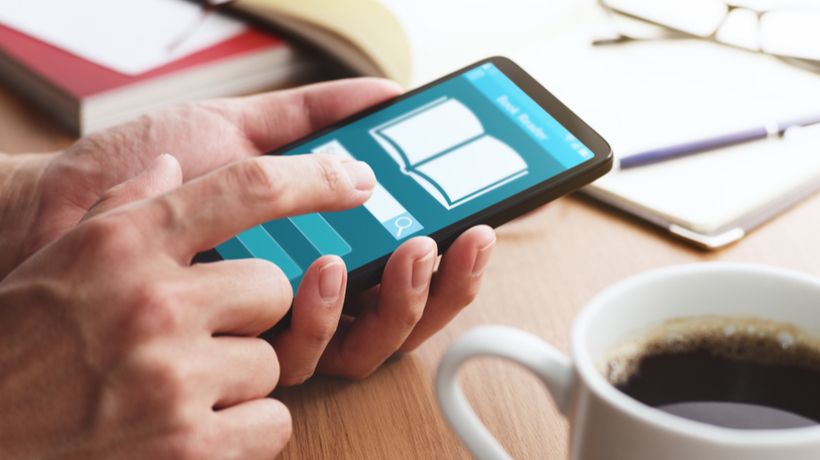Mobile Learning Devices and The Customer Experience
The way we shop is changing. More than a third of every dollar spent in the US is influenced by consumers’ digital interactions. With 84% of US shoppers using their mobile devices before or during a shopping trip, it is becoming increasingly important that the in-store experience matches up to the way we shop online. Introducing a digital element to the physical retail environment is a way to leverage the power of digital for a more meaningful customer experience, which we will explore in more detail below.
The digital experience
The importance of a digital experience in the retail environment is twofold. Firstly, it can be used by customer-facing staff to create a more interactive, informative experience, than traditionally would only be available online. Secondly, it can be used to support sales staff with just-in-time learning and performance support to improve product knowledge at the point of need.
Knowledge retention
Sales staff need to remember vast quantities of information about their products to provide customers with a genuinely useful service, but this isn’t always realistic. Introducing mobile learning devices to the shop floor can be a way to enhance the knowledge retention process. For instance, a mobile sales tool accessible on tablets stationed around the store can give salespeople instant access to all the information they could possibly need about the product ranges available. Giving customers accurate, up-to-date information, combined with the personal element of a face-to-face conversation, helps to cultivate a healthy sales environment, where staff aren’t relying on a just-in-case learning course, and customers come away feeling informed and positive about their interaction.
Showing the unshowable
It is not always possible to show every element of a product in store. For instance, in a car dealership, it may not be practical to take a vehicle apart to show a potential buyer a particular part. Online, it may be possible to show images or videos or these hard-to-see parts. Equipping store staff with mobile learning devices is an effective way to show customers exactly what they want to see, whether this is through a virtual tour, a simulation or a series of hotspot images designed to show off the product in its entirety. These multimedia elements can also create a context for unusual products - for instance, it may be difficult to comprehend how a new kitchen gadget will work, but by watching a short video clip on an in-store mobile learning device, it will make the use of the product clearer.
Getting it right
Salespeople are only human, and it would be unrealistic to expect anyone to be able to remember vast quantities of technical information about every product in-store. But today’s consumers are used to having every piece of information they need available at their fingertips online. No salesperson wants to deliberately mislead a customer or get important safety information wrong, but it’s not possible to memorize every fact about every item. Of course, customers can access this information on their smartphones, but to make it as easy as possible for them, stores could consider placing QR codes with products for easily accessible technical information. Alternatively, to maintain the human element of the in-store shopping experience, staff could carry mobile learning devices to enable them to pull up more in-depth product information at the touch of a button, without having to stumble through potentially inaccurate facts.
Brand reinforcement
Sales tools and product knowledge content available on in-store mobile learning devices can help set a brand apart from its competitors. The ubiquitous use of technology in the shopping experience must be embraced by bricks-and-mortar stores, and to become an early adopter will help you stand out. Whether it’s supplementary information available on tablets, interactive video walls or even augmented reality in a ‘virtual dressing room’, some of the most innovative retailers are pulling away from the pack with exciting experiments in using technology to enhance the retail experience. While ‘virtual mannequins’ or HD video walls may not be within your budget, creating beautiful multi-device learning and sales support tools for use in stores may give your organization the edge it needs to stand out.
How to bring mobile learning devices into a sales environment
Introducing multi-device learning to product knowledge training needn’t be an expensive operation. If you don’t already have mobile learning devices ready to roll-out across your stores, you could consider a BYOD strategy, whereby your staff can access product knowledge learning materials and information on their own smartphones or tablets at the point of need. This has the added benefit of allowing them to review information in their downtime, on the way to work or anywhere else for a better-informed, more confident workforce, with the power to change the customer experience. And if commissioning a suite of product knowledge material is outside your budget, many organizations find it quicker and more cost-effective to build their own using a mobile https://elearningindustry.com/directory/elearning-companies/gomo-learningauthoring tool. If this is the route you decide to take, ensure your tool outputs adaptive, responsive content for future-proof multi-device learning that will work on any device to keep costs down and to reduce production time.
It’s inevitable that today’s sales environment is becoming more influenced by the digital world. Getting on board early enables you to experiment and find out what works for you and your organization, giving you a head start and helping you better understand how to use mobile learning devices to improve the customer experience.
References:









